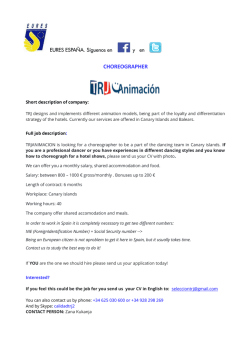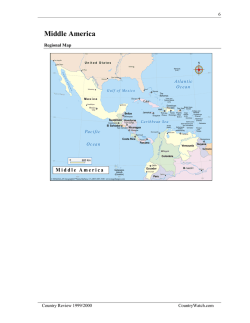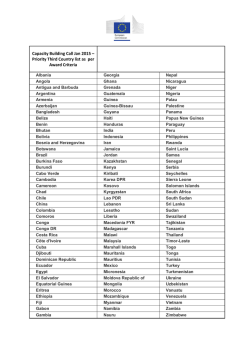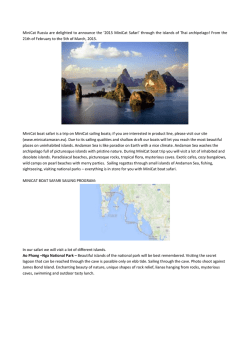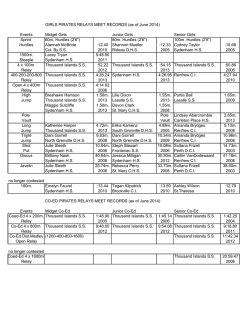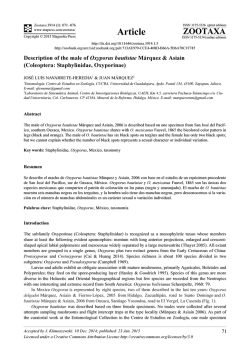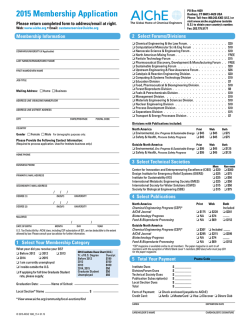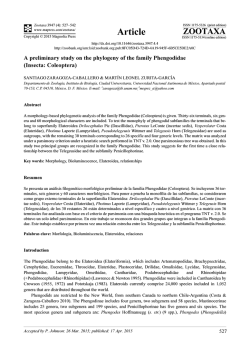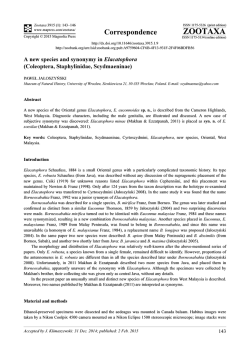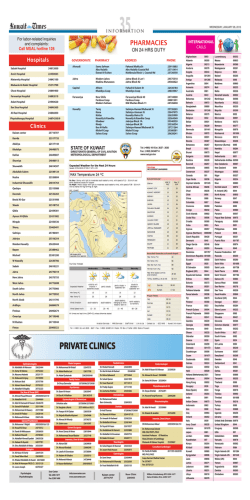
from the Canary Islands
Zootaxa 3931 (1): 117–126 www.mapress.com /zootaxa / Copyright © 2015 Magnolia Press Article ISSN 1175-5326 (print edition) ZOOTAXA ISSN 1175-5334 (online edition) http://dx.doi.org/10.11646/zootaxa.3931.1.8 http://zoobank.org/urn:lsid:zoobank.org:pub:1625A8F7-9449-4F21-800D-4D90A908A6D5 A new species of Oromia (Coleoptera: Curculionidae) from the Canary Islands ANTONIO MACHADO1 & HERIBERTO LÓPEZ2,3,4 1 Calle Chopin 1, 38208 La Laguna, Tenerife, Canary Islands, Spain. E-mail: [email protected] Departamento de Biología Animal (Zoología), Universidad de La Laguna. C/ Astrofísico Fco. Sánchez 3. 38206 La Laguna, Tenerife, Canary Islands, Spain. E-mail: [email protected] 3 Island Ecology and Evolution Research Group. IPNA-CSIC. C/ Astrofísico Fco. Sánchez 3. 38206 La Laguna, Tenerife, Canary Islands, Spain 4 Grupo de Investigaciones Entomológicas de Tenerife (GIET). C/ San Eulogio, 15, 1º. 38108 La Laguna, Tenerife, Canary Islands, Spain 2 Abstract The weevil Oromia thoracica n. sp. from Gran Canaria (Canary Islands) is described and compared to its closest allies. It can easily be distinguished by less sculptured elytra, its differently shaped antennal scrobe, and by the pronotum not constricted anteriorly and expanded over the head. Some ecological data are also provided, and considerations on the fauna occurring in the mesovoid shallow substratum (MSS) from the locality of this new species are made. Additional records and comments on other Oromia species as well as an identification key to the species of the genus are given. Key words: Molytinae, Oromia thoracica n. sp., MSS fauna, edaphobiont, identification key Resumen Se describe la nueva especie de gorgojo Oromia thoracica n. sp. de Gran Canaria (Islas Canarias) y se compara con sus congéneres. Se distingue fácilmente por los élitros menos esculpidos, la diferente conformación de la escroba antenal, y por el pronoto no constreñido anteriormente y proyectado sobre la cabeza. Se proporcionan datos ecológicos y algunas consideraciones sobre la fauna presente en el medio subterráneo superficial (MSS) de la localidad típica donde se colectó la especie. Además, se aportan nuevos datos de distribución, comentarios faunísticos y una clave de identificación de las especies de este género. Palabras clave: Molytinae, Oromia thoracica n. sp., fauna del MSS, edafobionte, clave de identificación Introduction The troglobitic fauna present in the Canary Islands has been found in lava tubes formed in pahoehoe basaltic flows, in volcanic pits, in the mesovoid shallow substratum (MSS; Hlaváč et al. 2006 and López & Oromí 2010), and in the deep underground network of voids and cracks. Other subterranean species, like proper edaphobionts (i.e., living in the soil), frequently appear together with this fauna, contributing to the enrichment of these habitats. Studies carried out in the Canary Islands since the 1980s have shown that this archipelago has a rich diversity of species adapted to subterranean habitats (Oromí 2004, 2008), with more than 150 described species. Most of these species have been discovered in studies carried out in lava tubes, but the MSS also harbors a significant number of exclusive species (31) or species that are also present in volcanic caves (37). The development of an effective pitfall trap (López & Oromí 2010) to evaluate the richness of the MSS has contributed to improved knowledge of the subterranean fauna in some Canary islands (Arnedo et al. 2007; Assing 2005; Enghoff 2012, 2013; Frisch & Oromí 2006; Machado 2008, 2011; Mahnert 2011; Vít & Oromí 2004). The use of this new MSS pitfall trap has been most valuable in those islands where lava tubes have collapsed and/or disappeared, such that biospeleological Accepted by R. Anderson: 9 Feb. 2015; published: 11 Mar. 2015 117 under a large crack of the ceiling through which roots emerge and the clay from the overlying soil percolates. This seem to confirm that this species is a radicicolous edaphobiont which appears in caves accidentally, or in transit during its movements among the subterranean soil layers, such as Alonso-Zarazaga (1987) suggests. The specimens collected over last two decades are more variable in body size than those used for the description of the species, so the total length now varies from 2.80–3.56 mm (s.r.) and the maximum width of elytra from 1.16–1.44 mm. Oromia aguiari Alonso Zarazaga, 1990 Studied material. Tenerife, Altos de Los Realejos, Palo Blanco (830 m a.s.l., UTM 28R3444-31379): 1 ♂ (Holotype), 1-XI-1985, A. Aguiar leg; 3♂, 1♀, 14-VII-2013, P. Oromí & H. López leg.; 1 ♀, 10-II-2014, P. Oromí & H. López leg. Biology and ecology. Only two specimens of O. aguiari were previously known (Alonso-Zarazaga 1990), despite sampling efforts in different subterranean habitats of Tenerife over three decades. They were collected with pitfall traps placed in a colluvial MSS that was quite silted by soil sediments, on a steep hillside covered by a remnant of laurel forest and some scattered introduced trees (pine, cypress and chestnut). In order to obtain fresh material for genetic analysis, we set more effective MSS pitfall traps in the same spot and collected five individuals over the last four years, together with other blind edaphobiont weevils of the genus Paratorneuma. Individuals usually have their integument largely impregnated by soil particles, in some cases covering the striking complex of foveolae and ridges that characterize this species. This frequent dirt is probably acquired while crawling through the soil, confirming that O. aguiari is an edaphobiont. The specimens recently collected have a broader range of body size variation than those used for the description of the species, so the total length now varies from 2.35–3.90 mm (s.r.) and the maximum width of elytra from 1.17–1.72 mm. Key to the species of Oromia 1. 2. - Pronotum not constricted anteriorly and expanded over the head; ventral margin of antennal scrobe reaching middle of rostrum; metapleurosternal sulcus absent. (Gran Canaria) . . . . . . . . . . . . . . . . . . . . . . . . . . . . . . . . . . . . . .Oromia thoracica n.sp. Pronotum constricted anteriorly and not expanded over the head; ventral margin of antennal scrobe reaching base of rostrum; metapleurosternal sulcus present. (Tenerife) . . . . . . . . . . . . . . . . . . . . . . . . . . . . . . . . . . . . . . . . . . . . . . . . . . . . . . . . . . . . . . . . 2 Pronotum longer than wide, discal and marginal-lateral carina absent; prosternum without keels; elytra large and elliptic, with all interstriae costiform; profile serrated . . . . . . . . . . . . . . . . . . . . . . . . . . . . . . . . . . . . . . . Oromia hephaestos Alonso-Zarazaga Pronotum as long as wide, with strong discal carinae and with a bilobed marginal-lateral carina on each side; prosternum with three longitudinal keels; elytra oblong with parallel sided at middle, with odd interstriae strongly costiform; profile smooth and slightly undulate . . . . . . . . . . . . . . . . . . . . . . . . . . . . . . . . . . . . . . . . . . . . . . . . . . . . . . . . . . . .Oromia aguiari Alonso-Zarazaga Acknowledgements We thank Pedro Oromí, Elena Morales, David Hernández, Isabel Sancibrián and Salvador de La Cruz for their help during the fieldwork. Pedro Oromí and Brent Emerson revised and helped to improve the paper. The Cabildo de Gran Canaria facilitated us all the pertinent permits to work in the field. References Alonso-Zarazaga, M.A. (1987) Oromia hephaestos n.gen., n.sp. de edafobio ciego de las Islas Canarias (Col., Curculionidae, Molytinae). Vieraea, 17 (1–2), 105–115. Alonso-Zarazaga, M.A. (1990) Un nuevo edafobio ciego de Canarias: Oromia aguiari n.sp. (Col., Curculionidae, Molytinae). Vieraea, 18, 267–274. Alonso-Zarazaga, M.A. (2013) Molytinae. In: Löbl, I. & Smetana, A. (Eds.), Catalogue of Palaearctic Coleoptera. Vol. 8. Curculionoidea II. Apollo Books, Stenstrup, pp. 475–496. Alonso-Zarazaga, M.A. & Lyal, C.H.C. (1999) A world catalogue of families and genera of Curculionoidea (Insecta: A NEW SPECIES OF OROMIA FROM THE CANARY ISLANDS Zootaxa 3931 (1) © 2015 Magnolia Press · 125 Coleopotera) (Excepting Scolytidae and Platypodidae). Entomopraxis, Barcelona, 315 pp. Arnedo, M.A., Oromí, P., Múrria, C., Macías-Hernández, N. & Ribera, C. (2007) The dark side of an island radiation: systematics and evolution of troglobitic spiders of the genus Dysdera Latreille (Araneae: Dysderidae) in the Canary Islands. Invertebrate Systematics, 21, 623–660. http://dx.doi.org/10.1071/IS07015 Assing, V. (2005) The first subanophthalmous species of Oxypoda Mannerheim from the Canary Islands (Coleoptera: Staphylinidae: Aleocharinae). Vieraea, 33, 151–154. Enghoff, H. (2012) Three new species of Dolichoiulus millipedes from the underground of Gran Canaria, with notes on the circumscription of the genus (Diplopoda, Julida, Julidae). European Journal of Taxonomy, 15, 1–12. Enghoff, H. (2013) New montane, subterranean congeners of a littoral millipede, genus Thalassisobates (Diplopoda: Julida: Nemasomatidae). Journal of Natural History, 47, 1613–1625. http://dx.doi.org/10.1080/00222933.2012.759289 Frisch, J. & Oromí, P. (2006) New species of subterranean Micranops Cameron from the Canary Islands (Coleoptera, Staphylinidae, Paederinae), with a redescription of Micranops bifossicapitatus (Outerelo & Oromi, 1987). Deutsche Entomologische Zeitschrift, 53, 23–37. http://dx.doi.org/10.1002/mmnd.200600003 Hlavác, P., Oromí, P. & Bordoni, A. (2006) Catalogue of troglobitic Staphylinidae (Pselaphinae excluded) of the world. Subterranean Biology, 4, 97–106. Israelson, G. (1990) A Madeiran assemblage of coleoptera developing in dead wooden roots. Boletim do Museu Municipal do Funchal, 42 (217), 49–65. López, H. & Oromí, P. (2010) A pitfall trap for sampling the mesovoid shallow substratum (MSS) fauna. Speleobiology Notes, 2, 7–11. Machado, A. (2008) Three new endogean species of Laparocerus Schonherr, 1834 from the Canary Islands (Coleoptera, Curculionidae). Journal of Natural History, 42, 1277–1288. http://dx.doi.org/10.1080/00222930801942616 Machado, A. (2011) Nuevos taxones de Laparocerus Schoenherr, 1834 de El Hierro y La Gomera, islas Canarias (Coleoptera, Curculionidae, Entiminae). Graellsia, 67, 57–90. http://dx.doi.org/10.3989/graellsia.2011.v67.043 Mahnert, V. (2011) A nature’s treasury: Pseudoscorpion diversity of the Canary Islands, with the description of nine new species (Pseudoscorpiones, Chthoniidae, Cheiridiidae) and new records. Revista Ibérica de Aracnología, 19, 27–45. Naranjo, M., Moreno, C. & Martín, S. (2014) ¿Dónde buscar troglobiontes? Ensayo de una cartografía predictiva con MaxEnt en Gran Canaria (islas Canarias). Arxius de Miscel·lània Zoològica, 12, 83–92. Oromí, P. (2004) Canary Islands: Biospeleology. In: Gunn, J. (Ed.), Encyclopedia of caves and karst science. Fitzroy Dearborn, New York, pp. 366–371. Oromí, P. (2008) Biospeleology in Macaronesia. In: Espinasa-Pereña, R. & Pint, J. (Eds.), Proceedings of the X, XI and XII International Symposia on Vulcanospeleology. Association for Mexican Cave Studies, Bulletin 19, and Sociedad Mexicana de Exploraciones Subterráneas, Boletín 7. Association for Mexican Cave Studies. Austin, Texas, pp. 114–118. Pérez-Torrado, J., Carracedo, J.C. & Mangas, J. (1995) Geochronology and stratigraphy of the Roque Nublo cycle, Gran Canaria, Canary Islands. Journal of the Geological Society of London, 152, 807–818. http://dx.doi.org/10.1144/gsjgs.152.5.0807 Vít, S. & Oromí, P. (2004) Contribution to the scydmaenid fauna of La Gomera (Canary Islands) (Coleoptera: Scydmaenidae). Revista de la Academia Canaria de Ciencias, 15, 321–328. 126 · Zootaxa 3931 (1) © 2015 Magnolia Press MACCHADO & LÓPEZ
© Copyright 2025
